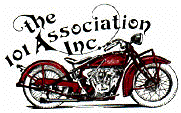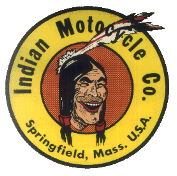If, and I say IF someone has found that one method is better than the other, one thing is sure, I haven't heard about it. For all what I know, Indian had the forked rod to the front even when the crankshaft only had splash method of lubrication. And they continued with the same rod position when the crank pin got an direct feed oil channel. HD have tried the forked rod both at front or rear, and crankpins with one, two or three oil feed holes. People have found rods wrongly mounted in their Indians and HD's only after decades of fine running without ill effect. Cylinder wear can have so many different causes that it is impossible to say if more or less wear is caused of the way the forked rod is mounted. The same goes for crank pin/bearing wear.
I think rod to the front and a crank pin with 4 holes is a acceptable engineering decision. I reason like this: The oil that leaks past the bearings of the knife rod is spraying the walls of the crankcase and also into the cylinders. Because of the expected and anticipated drainage of the rod bearing, each oil hole is lubricating one row of rolls. HD has the forked rod at the rear and its closing wall collects more oil in the fork cavity in order to lubricate the rod bearings better perhaps. The undulating speed of the crankshaft, and rod movement hopefully churns the oil to a mist, cools and spread it back into to the bearings, and HD tried to do with only one or two oil holes in the crankpin.
The reasoning in Indian favour, has many flaws, I know. A equal distribution of oil to the 4 holes depends on some sort of distribution inside the pin cavity and a steady flow of oil and that simply doesn't happen with the hole positions and drip feed of all of the Indian pump versions. Position of the holes right in the path of the rolls does make oil film pressure disappear at the holes and should accelerate local wear. 3 holes in position in between the rows would be more logic in that perspective. However which way the rods are mounted, the small oil drops sprayed from the bearings does cling to and collects on the crankshaft or churned to a mist by hitting the rods again or by the air flow in the crankcase. Still, 4 holes, forked rod to the front does work, and bearings does live a reasonable time as is.
One thing is for certain: In the regard of wear, there is no substitute to oil. Ample amount, in the right place, clean and good quality always wins over lack of oil, at the wrong place, dirty or poor quality oil.
Crankshaft balance has no impact if the forked rod is mounted rear or front. That is because the rods sits on the same crankpin.


